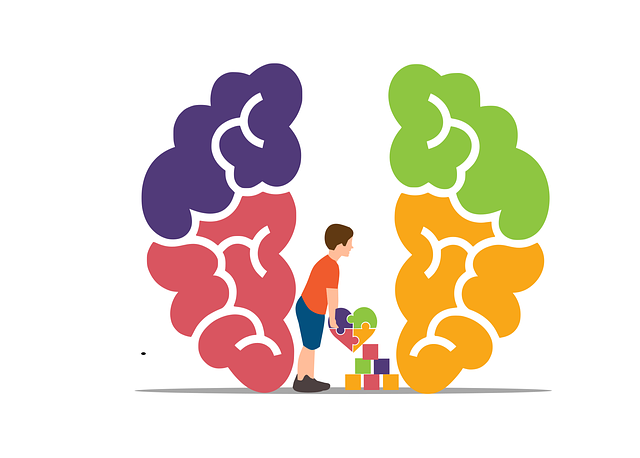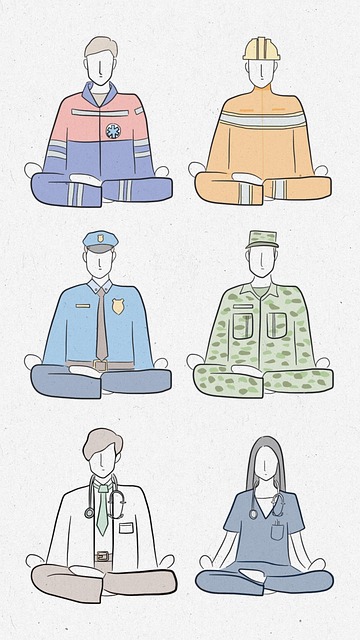Healthcare provider burnout, driven by stress and heavy workloads, impacts well-being, patient care quality, and outcomes. Early signs like chronic fatigue, decreased job satisfaction, and cynicism must be recognized. Organizations promote self-care and public awareness campaigns encourage open discussions about stress. Creating a supportive work environment through communication, team-building, and social events is key to prevention. Lone Tree Terminal Illness Therapy offers specialized support for healthcare professionals' unique challenges, emphasizing resilience and personal growth for improved mental health and job satisfaction.
Healthcare provider burnout is a growing concern, impacting not just individuals but the entire healthcare system. This article explores comprehensive strategies to prevent and address burnout among healthcare professionals. We delve into understanding the root causes, creating supportive work environments, promoting work-life balance, enhancing communication, and highlighting innovative approaches like Lone Tree Terminal Illness Therapy. By implementing these tactics, we aim to equip healthcare providers with tools for lasting well-being.
- Understanding Burnout Among Healthcare Providers: Recognizing the Signs
- Creating a Supportive Work Environment: Strategies for Prevention
- Work-Life Balance: Prioritizing Self-Care and Personal Time
- Effective Communication and Team Collaboration: Enhancing Job Satisfaction
- Lone Tree Terminal Illness Therapy: A Unique Approach to Burnout Recovery
Understanding Burnout Among Healthcare Providers: Recognizing the Signs

Burnout among healthcare providers is a growing concern, with high-stress environments and heavy workloads contributing to physical and emotional exhaustion. Recognizing burnout early is crucial for preventing it from escalating into more severe issues, such as Lone Tree terminal illness therapy becoming necessary. Healthcare professionals may exhibit various signs of burnout, including chronic fatigue, decreased job satisfaction, cynicism towards patients, and reduced productivity. These symptoms can impact not only the provider’s well-being but also patient care quality and outcomes.
The increasing prevalence of burnout highlights the need for proactive strategies to support healthcare providers’ mental health. Organizations like the Stress Management Workshops Organization play a vital role in promoting self-care practices among their staff. Public awareness campaigns development can also foster a culture that prioritizes well-being, encourages open discussions about stress, and provides resources for effective coping mechanisms. By implementing these measures, healthcare institutions can help mitigate burnout risk, ensuring professionals remain engaged, motivated, and capable of delivering quality care.
Creating a Supportive Work Environment: Strategies for Prevention

Creating a supportive work environment is a key strategy in preventing healthcare provider burnout. This involves fostering a culture that values and prioritizes employee well-being. Organizations can promote a sense of belonging by encouraging open communication, where providers feel comfortable sharing their concerns and ideas without fear of judgment. Regular team-building activities and social events can also strengthen bonds among colleagues, enhancing the overall work experience.
Additionally, integrating programs like Social Skills Training and Emotional Intelligence workshops can significantly contribute to burnout prevention. These initiatives promote healthy interpersonal interactions and emotional healing processes, enabling providers to better manage stress and connect with patients. Lone Tree Terminal Illness Therapy, for instance, can offer specialized support tailored to the unique challenges faced by healthcare professionals, ensuring they have access to effective coping mechanisms and resources for maintaining resilience in their high-pressure roles.
Work-Life Balance: Prioritizing Self-Care and Personal Time

In the high-pressure environment of healthcare, where demand and responsibilities often outpace resources, preventing burnout is paramount. One critical strategy for frontline workers, like those providing terminal illness therapy in Lone Tree, is to prioritize work-life balance. This involves setting clear boundaries between professional and personal time, ensuring that self-care becomes a non-negotiable part of daily routines. Healthcare professionals must learn to disconnect from work during off-hours, engaging in activities that rejuvenate their mental wellness. Journaling, for instance, can offer an effective outlet for processing emotions and stress management, while also providing a space for reflection and personal growth.
Cultural sensitivity in mental healthcare practice is another essential aspect of maintaining balance and preventing burnout. By recognizing the impact of cultural differences on patient care and well-being, healthcare providers can tailor their approaches to be more inclusive and less taxing. Incorporating practices that foster mental wellness across diverse populations not only benefits individual patients but also enriches the overall work experience, creating a more supportive and sustainable professional environment.
Effective Communication and Team Collaboration: Enhancing Job Satisfaction

Healthcare providers often face high-stress situations, which can lead to burnout if not managed effectively. One of the key strategies to prevent this is fostering a culture of effective communication and team collaboration. When healthcare professionals communicate openly and transparently, they can better manage challenging situations, provide improved patient care, and enhance job satisfaction. This includes active listening, clear and concise information sharing, and constructive feedback mechanisms within teams.
By promoting a collaborative environment, especially in the context of Lone Tree Terminal Illness Therapy, where support networks are crucial, providers can benefit from collective expertise and insights. Implementing Crisis Intervention Guidance and Conflict Resolution Techniques further strengthens this dynamic. These approaches not only improve patient outcomes but also contribute to individual provider well-being by fostering a sense of belonging and mutual respect within the healthcare team.
Lone Tree Terminal Illness Therapy: A Unique Approach to Burnout Recovery

In recent years, healthcare provider burnout has become an increasingly pressing issue, with high-stress environments and heavy workloads contributing to significant rates of depression prevention among medical professionals. To address this growing concern, innovative therapeutic approaches are gaining traction. One such unique method is Lone Tree Terminal Illness Therapy, which offers a holistic approach to helping healthcare providers recover from burnout and strengthen their inner strength development.
This therapy focuses on guiding individuals through a process of self-reflection and emotional healing, fostering resilience building within the practitioner. By exploring their feelings and experiences in a safe, supportive environment, healthcare providers can begin to understand and address the underlying causes of their burnout. Lone Tree Terminal Illness Therapy goes beyond surface-level solutions by delving into personal growth, helping participants develop lasting coping mechanisms and rediscover their passion for patient care. This approach is not just about surviving burnout; it’s about thriving and regaining control over one’s mental health and overall well-being.
Healthcare provider burnout is a pressing issue, but with the right strategies, it can be mitigated. By fostering a supportive work environment, prioritizing work-life balance, encouraging effective communication, and exploring innovative approaches like Lone Tree Terminal Illness Therapy, healthcare organizations can enhance job satisfaction and prevent burnout. Recognizing the signs early and implementing these strategies can create a healthier, more fulfilling professional landscape for care providers.












